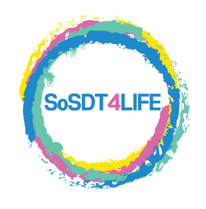Breast cancer: what is it?
Mutations in the genes that control cell growth are what lead to cancer. The mutations allow cells to divide and multiply in an uncontrollable manner. Breast cancer is a type of cancer that begins in the breast cells. The lobules or ducts are the primary areas where breast cancer originates.
Treatment Options:
Every stage of the disease can be treated, and there are numerous breast cancer treatments available. Most patients require at least two different treatments in combination.
Surgery for breast cancer
The majority of patients with breast cancer will have surgery to remove tumors or cancerous cells from their breasts and other affected areas.
There are two surgical options: lumpectomies and mastectomies. The following factors are considered when deciding which option to use:
- primary tumor size and location
- individual preference
- other elements, like genetic predisposition
- A lymph node biopsy will almost certainly be performed at the same time.
Mastectomy
The surgical removal of the entire breast is known as a mastectomy. It is advised when cancer is discovered throughout the breast.
Lumpectomy
A lumpectomy, also known as breast-conserving surgery, removes cancerous cells while leaving the rest of the breast intact.
Reconstructive
A plastic surgeon can reconstruct your breasts using an artificial implant or a flap of tissue taken from another part of your body.
Radiation Therapy
High-energy X-rays are used in radiation, a form of targeted therapy, to destroy cancer cells and stop them from proliferating.
Chemotherapy
Chemotherapy is a type of cancer treatment that targets cancer cells all over your body with potent drugs. It is typically administered intravenously or orally in the form of pills, though it is occasionally injected directly into the spinal fluid surrounding the spinal cord.
Advanced, metastatic breast cancer that has spread throughout the body is also primarily treated with chemotherapy.
Hormone Therapy
Hormone-receptor positive breast cancer accounts for about 2 out of every 3 cases, according to Trusted Source. This indicates that estrogen and progesterone receptors serve as growth factors for breast cancer cells. Endocrine therapy, also known as hormone therapy, prevents these hormones from adhering to cancer cells, thereby halting the spread of the disease.
Hormone therapy comes in many forms, but the majority of them function by modifying estrogen levels and preventing estrogen from attaching to cancer cells.
Stages of breast cancer and treatment
Stage 0 (DCIS)
Ductal carcinoma in situ (DCIS), also known as noninvasive breast cancer, is the term used to describe precancerous or cancerous cells that are restricted to the milk ducts.
Breast cancer that has not spread to other parts of the body can be prevented with early treatment such as a lumpectomy and mastectomy followed by radiation.
Stage 1
When breast cancer is in stage 1A, the primary tumor is 2 centimeters in diameter or smaller and the axillary lymph nodes are unaffected. Stage 1B refers to cancer found in lymph nodes with either no breast tumor present or a breast tumor that is less than 2 centimeters in size.
Early-stage invasive breast cancers are categorized as 1A and 1B. Surgery may be advised along with one or more additional treatments, such as radiation or hormone therapy.
Stage 2
Stage 2A tumors are less than 2 cm in diameter and have spread to one to three nearby lymph nodes. Or it has grown to a size of between 2 and 5 centimeters without reaching the lymph nodes.
Stage 2B refers to a tumor that has reached one to three nearby lymph nodes and is between 2 and 5 centimeters in size. Or, it has grown to a size greater than 5 centimeters and hasn’t affected any lymph nodes.
Most likely, you’ll require a mix of surgery, chemotherapy, and possibly targeted therapy, radiation, or hormone therapy.
Stage 3
Stage 3 treatment typically entails a combination of therapies, such as:
Systemic therapies, Surgery, and Radiation therapy
Stage 4
Systemic therapy is the main form of treatment for stage 4 patients, although radiation and surgery are options in some circumstances.
Immunotherapy as a Novel Treatment
Although the Food and Drug Administration (FDA) has not yet approved immunotherapy for the treatment of breast cancer, it is a promising field and an emerging treatment option available only in some of the premier cancer centers, including SPDT4Life.

Leave A Comment
You must be logged in to post a comment.